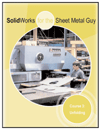
Heating, Air-conditioning & Refrigeration Distributors International (HARDI) recently presented its 2012 HVACR market forecast, which marks the association's initiative to expand on last year's forecast for residential cooling equipment to include heating, refrigeration, and commercial products and markets.
"Forecasting anything isn't easy, but with our exceptional economists and our wide network of industry and analyst contacts, we felt HARDI was in the best position to try to provide some barometer for the performance of the 2012 HVACR market," said Talbot Gee, HARDI executive vice president and COO.
MARKET TRENDS
Before venturing into the 2012 forecast, Gee and HARDI's chief economist Alan Beaulieu, president, Institute for Trend Research, recapped the residential HVACR market in 2011: Housing starts were up 4 percent; air conditioner and heat pump shipments were up 7 percent; 71 percent of cooling equipment shipments were 13 SEER and 21 percent were R-22 dry shipped units, and compressor retrofits were essentially flat. Furnaces and commercial HVAC and refrigeration were not covered.HARDI distributor sales grew at a rate of 2.9 percent, which really did not keep up with industry inflation, noted Gee. "That did make 2011 a bit of a disappointment, but in the big picture, 2011 was always structured as the infrastructure year. It was a year to get ready for 2012, which has significant growth opportunities."
Beaulieu agreed, noting that 2012 will be better than 2011 for several reasons. First, employment is still going up, which means people are staying put and spending money on their houses. "The industry as a whole benefits from this trend. The new employment numbers are enough to keep the economy on a positive footing, and that will have a positive effect on retail sales, which have a lot in common with HARDI sales."
Second, industrial production is doing well, noted Beaulieu. "The rates of change are encouraging as far as ongoing economic expansion is concerned. The stability that we're going to see in the U.S. economy should mean stability for HARDI members." There are issues that could negatively impact consumer spending, such as massive layoffs, large tax increases, and/or spiking food and oil prices, but Beaulieu does not believe any of these will occur this year.
Third, retail sales are expected to improve in the second half of 2012, due to more people working. And finally, the prices of raw materials, including steel, copper, oil, and gasoline, are not expected to increase significantly in 2012. "Oil may still be a concern, but only if the price reaches $120/barrel for an extended period of time. Steel and copper prices have relaxed somewhat, although we believe that as the global economy heats up in the second half of 2012, there will be a natural demand pull on the price of metals. This means more price increases are probably coming, because the cost of raw materials is going to increase," said Beaulieu.
COMMERCIAL MARKETS
For the last two years, the commercial HVAC market has been a pleasant surprise, noted Gee, and he expects that trend to continue in 2012. "In 2011, AHRI shipments were up 9.4 percent; three publicly traded HVAC companies all showed strong commercial unit volumes and revenues, and three-phase equipment demand was up 19.9 percent."Not all sectors of the commercial market will perform equally well in 2012, said Beaulieu, as school construction will perform better than the hospital market, which is in decline. "And if you can sell equipment for office spaces, you will do much better than if you're selling into lodging, which is in decline and shows no signs of recovery. It is very mixed, although overall, the commercial market is improving."
HARDI forecasts commercial HVAC growth in 2012 with increased opportunities in 2013. This will provide a great opportunity to make more money this year, as well as next year, said Beaulieu. "Grab your share, sell into this market, push this market, and be an expert in this market. You're going to make some money."
Commercial additions, alterations, and improvements are a bit of a mixed bag, as they stand at year-ago levels of $17.4 billion. However, the rising costs of R-22 will provide an opportunity, stated Gee, as facility owners and managers may be more open to replacing their existing R-22 systems.
The commercial refrigeration market in 2011 showed positive growth, with equipment shipments up 4 percent. HARDI expects single digit growth in 2012 as well, although there are some changes that will affect this market. "We are waiting for the DOE to decide how they want to enforce the new commercial walk-in standards," said Gee. "It seems likely that what will happen is an ECM mandate on equipment that goes into commercial walk-in applications. Essentially it would be a minimum efficiency increase on commercial refrigeration equipment, which is going to have a price impact. Hopefully this will be offset by the volatility we've seen lately due to EPA actions as it relates to R-22 prices."
That being said, the price of R-22 will continue to be a concern until EPA decides on its final allocation rule, which may not happen until the third quarter. "We have a hard time seeing how the price spikes that we've seen recently are sustainable going forward, because we've heard from a variety of sources that there is a two-year supply of R-22 refrigerant available in the marketplace," said Gee. "The uncertainty over R-22 is inconvenient and uncomfortable, but it does not seem likely that any of the agencies [EPA, DOE] will impact the 2012 market."
RESIDENTIAL MARKETS
It is no surprise that the housing market is not expected to be vibrant in 2012, noted Beaulieu, as housing starts, including multi-family and single family construction, are only 1.5 percent above year-ago levels. "However, multi-family housing starts will provide some nice opportunities in 2012, because I think we're going to see a significant year-over-year growth rate, and there will be a little more growth in 2013. The rental market is going to be strong for years to come - it's not a passing fancy." In fact, in 2012, HARDI predicts over a 15 percent increase in the share of all housing starts that will be multi-family units.Home improvement construction has been flat for a while, but it is starting to grow, and HARDI believes this sector will increase slightly in 2012. "There will be some nice growth in this area in 2012, but it will begin to slide away in the first part of 2013 and then slump in the second half of next year," said Beaulieu. He added that homeowners are typically opting for smaller retrofits and renovations, usually under $25,000.
The residential cooling market will be interesting in 2012, especially as indicated by what happened in 2011. Last year saw 4.34 million R-410A units shipped, including 330,000 ductless systems, which represented 6 percent of the total cooling market. Approximately 1.2 million R-22 dry charge units were shipped, and distributors said those numbers would have been higher had they been able to obtain more inventory. A more disquieting statistic is that sales of in-room air conditioners increased more than 30 percent since 2009.
In 2012, HARDI predicts high single-digit growth for residential cooling unit shipments, with increasing share of both R-22 dry-shipped units and ductless mini-splits.
On the residential heating side however, HARDI forecasts much more anemic growth for furnaces. The penetration of condensing furnaces will be interesting to watch this year, noted Gee, especially as DOE's regional standards take effect in 2013. "The challenge we have is there is no enforcement policy for these standards, and there will not be one until January 2013. This means as we get to the end of 2012, distributors may have difficulty deciding what to stock, as we won't know what the sell-through policy will be, or if there will be one - or how non-condensing furnaces will be treated after May 1, 2013. That's a horrible bit of uncertainty for Northern distributors."
Another interesting factor to note is that there has been a 10 percent decline of furnaces installed in residential new construction, with only 60 percent of those homes being equipped with furnaces. "At the same time, heat pump shares have grown 15 percent to 35 percent of those new starts," said Gee. "That speaks to greater awareness and reliability of heat pumps, as well as their increasing aptitude in colder climates."
Time will tell how accurate the 2012 forecast will be, but so far, the industry is trending in a positive direction. "January was strong, with HARDI distributor sales up 6.2 percent, and more importantly, six of the eight regions were up," said Gee. "I think 10 percent growth is within reach for HARDI distributors by the end of 2012. That would be fantastic."







